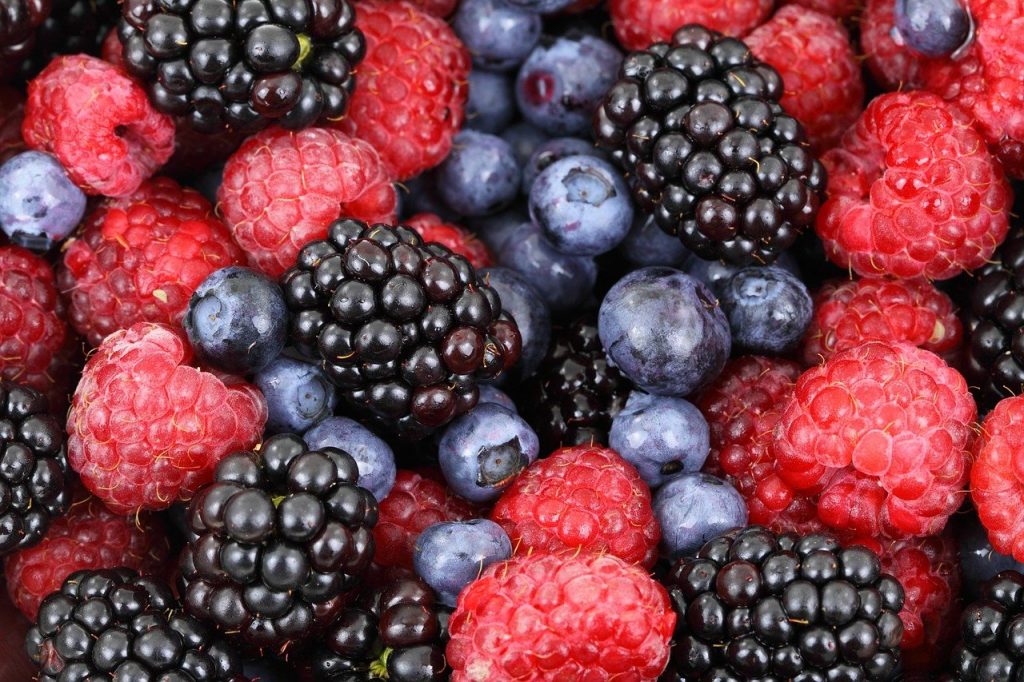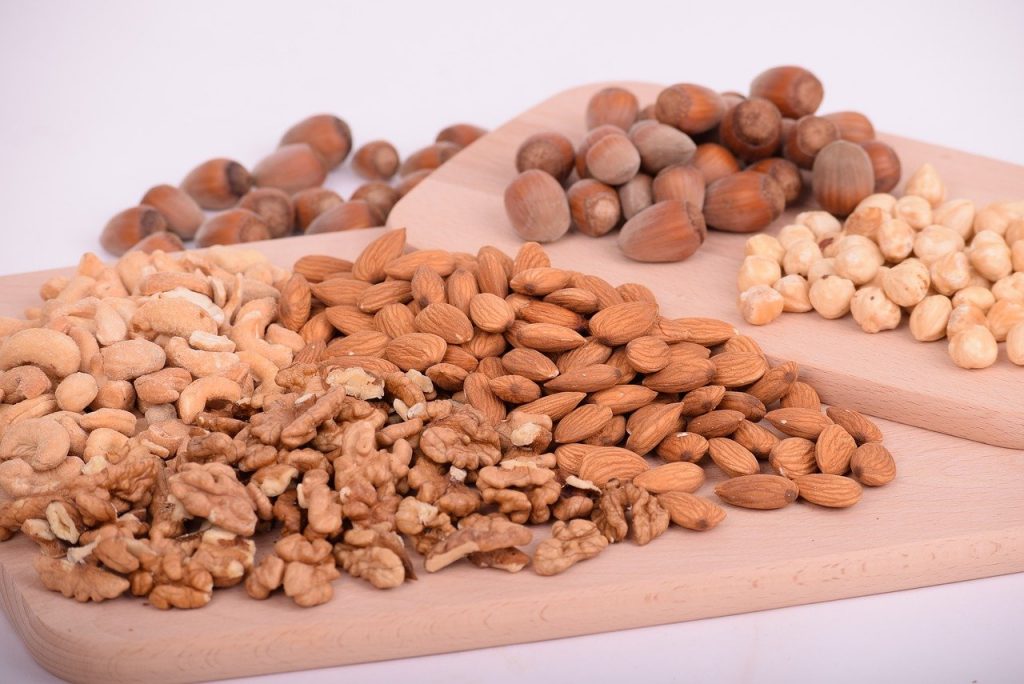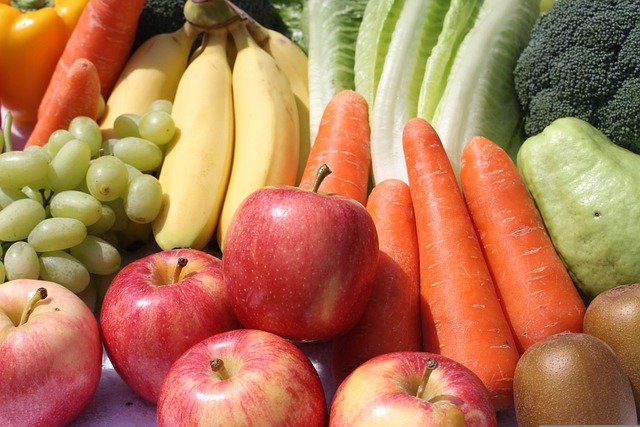Are you having a hard time with your bowel movement lately? Struggling to lose weight despite cutting carbs from your diet? It could be that you’re lacking dietary fibers in your system. In this post, we will be discussing several high fiber foods that you should be eating.
You have probably heard of how important dietary fibers are in your diet. However, not a lot of people receive the necessary amounts of fiber in their system as processed foods have become dominant in a lot of peoples’ diets. Dietary fibers can only be sourced from fruits, vegetables, legumes, and whole grains – foods that aren’t really popular in Western diets.
According to a 2013 survey conducted by the Centers for Disease Control and Prevention (CDC), only 13.1% and 8.9% of Americans eat enough fruits and vegetables, respectively.[1] This phenomenon isn’t only exclusive to Americans, though. According to the World Health Organization (WHO), the insufficient intake of fruits and vegetables are estimated to cause 2.8% of deaths worldwide.[2]
Why Your Body Needs Dietary Fiber
But what exactly does fiber do for your body?
Fiber is an essential nutrient for a healthy diet. The body does not produce its own fiber and it is unable to digest it either. Instead, fiber is both processed by the good bacteria in your body and is utilized as bulk to stool, which lubricates your colon and pushes it out your body faster.
There are two types of dietary fiber[4]:
- Soluble Fiber: Soluble fibers are able to absorb water, which creates a gel-like substance in your digestive system.
- Insoluble Fiber: Insoluble fibers cannot be dissolved by water, therefore increases stool bulk which helps people with constipation or irregular stools.
When the good bacteria in your stomach digests or ferments these fibers, it turns into short chained fatty acids that provides energy to the bacterial culture that resides in the mucosal lining. This mucosal lining protects your gastrointestinal wall from inflammatory diseases such as irritable bowel syndrome or Crohn’s disease.[3]
With the lack of fiber, your body will not only experience problems with digestion, as it is linked to other conditions, such as weight gain, diabetes, strokes, nutritional deficiencies, and cardiovascular problems.
By supplementing your body with dietary fibers, your digestive system is sure to be in optimum health. Improving your digestive system will not just lead to bearable bathroom trips – it also positively impacts other areas of our health, such as[4]:
- Helps protect against heart disease: Soluble dietary fibers may help lower the “bad” cholesterol levels in your system. These are the substances that block your arteries when present in large amounts, causing heart attacks and strokes.
- Helps control blood sugar levels: Among people with diabetes, soluble fibers can slow the absorption of sugar, which keeps your blood sugar levels stable. Insoluble fibers are also known to prevent type-2 diabetes.
- Helps with weight management: High-fiber foods are very filling and provides you with long-lasting energy. This prevents you from over-eating, as high-fiber foods will make you feel full for less, thus making it easier to restrict your caloric intake.
How to Incorporate More Fiber in Your Diet
If you’re used to a diet filled with meats and processed food, it can be hard to introduce other types of food, such as vegetables and fruits, into your everyday diet. Don’t worry if you’re confused about where to start – a gradual transition into a clean and healthy diet is much better at helping your form new habits rather than going cold turkey on what you’re used to.
Here are some easy tips you can follow so you can sneak in more fiber into your meals and snacks.[4]
- Always choose the whole grain option. When it comes to bread, pasta, or cereals, you’ve probably noticed that there is always a whole grain variant for these products. Compared to refined grains (white bread, regular pasta, etc.), whole grains are minimally processed, and thus retain nutrients that could have been stripped off during the production process. This also means that whole grains have much higher fiber content than refined grains, which will make you feel full with lesser calories. This also applies for when you’re baking – choose whole wheat flours instead of white flour.
- Add chia seeds to your favorite drinks. Chia seeds are nutritious and fiber packed superfoods that are often used as toppings for salads or yogurt bowls. Another great and enjoyable way to consume more of these fiber-rich seeds is to add them to your favorite fresh fruit juices.
- Add more legumes to your meals. Legumes, such as beans, peas, and lentils are a staple in many cuisines. It’s not only rich in fiber, as it also contains significant amounts of protein, carbohydrates, vitamins, and minerals – it’s a well-rounded source of nutrition that is a welcome addition for every meal.
- Snack on nuts and fruits instead of potato chips. Potato chips, as savory as they are, contains little to no nutritional value. They’re also known as “empty carbs”, since they provide almost no nutrition while being carb heavy. When you’re transitioning to a healthier diet, snacks aren’t an excuse to cheat (although indulging every now and then is alright). Instead, treat your snack time just as equally important as your meals, and opt for healthier, fiber-rich alternatives such as nuts and fruits.
10 High Fiber Foods You Need in Your Diet
Now that you’ve heard of all the good things fiber can do for you, here are some high fiber foods that we highly suggest you add to your next grocery list.
- Broccoli
This cruciferous vegetable is one of the healthiest of its kind. It contains plenty of essential vitamins and minerals, such as vitamin C, vitamin K1, folate, potassium, manganese, and iron. Additionally, broccoli provides a good amount of fiber, as a 1 cup serving provides 5-10% of the daily recommended intake.[5]

Broccoli may be hated by some (especially by kids), but this nutritious vegetable doesn’t have to be just served unseasoned and as a side. Broccoli can be fun too – it can be added to salads, roasted with plenty of spices, or stir fried with your favorite proteins.
- Beans
Beans are one of the cheapest and easiest ways to add more fiber into your meals. It can be added to soups, salads, stews, or even as the famed beans on toast. Beans are also a staple in many cuisines, such as Mexican, Indian, Middle Eastern, and Mediterranean (which is considered as one of the healthiest diets!) where they are typically incorporated with carbs or proteins.
Here are some examples of beans with their corresponding fiber content per 1 cup serving[6]:
- Small White Beans (19g, 74% DV)
- Lentils (16g, 63% DV)
- Pinto Beans (15g, 62% DV)
- Black Beans (15g, 60% DV)
- Chickpeas (12g, 50% DV)
- Mung Beans (15g, 61% DV)
Notice that a cup of each of these beans will give you at least 50% of your daily recommended intake of fiber. Aside from that, beans are also high in proteins, which will help you feel full faster with less carbs. This is perfect for people who want to lose weight.
- Berries
Berries, such as blackberries, raspberries, and strawberries don’t just make great dessert flavors and smoothie ingredients – these fruits are among the most nutrient dense, making them one of the most palatable sources of vitamins, minerals, and fiber.

Here are some examples of berries with their corresponding fiber content per 1 cup of serving[7]:
- Raspberries (8g, 32% DV)
- Blackberries (8g, 32% DV)
- Strawberries (3g, 13% DV)
Aside from consuming them as dessert or smoothies, berries can also be eaten as a snack along with nuts. Berries are also rich in antioxidants which will increase your protection against chronic diseases.[8]
- Avocados
Avocadoes have become popular lately, thanks to their versatility (avocado toast, avocado smoothie, guacamole… so many options!) and high nutrient value. While its mostly recognized for being full of healthy fats, avocadoes also have a good amount of fiber – each 1 cup serving has approximately 10 grams of fiber, which is nearly half of your daily recommended intake.[9]
- Popcorn
Also known as the king of snack foods, popcorn is another great source of fiber, with 1g of fiber per 1 cup of serving.[9] However, we’re talking about plain popcorn here – not of the salty and buttered stuff that is filled with saturated fats.
Next time you’re at the theater, feel free to snack on all the popcorn you want, but make sure to pick the lightly salted or plain variant!
- Whole Grains
As we have mentioned earlier, whole grains are the better choice when you’re looking at carbohydrate sources. Not only does whole grain contain more vitamins and minerals, such as selenium, potassium, and magnesium, but they have significantly higher amounts of fiber compared to refined grains.[10]
For instance, white bread contains 2.7g of dietary fiber per 100 grams serving. Meanwhile, whole grain bread contains 7g of dietary fiber per 100 grams serving – almost 3 times more than white bread.[9]
- Apples
While apples won’t literally keep the doctor away, it has enough fiber to keep those frustrating bathroom trips away. This humble fruit contains 4.4g of dietary fiber per medium sized apple.[9]
Apples can be enjoyed as a snack, smoothie, juice, or as a filling for pies. It’s highly common and inexpensive, so you won’t have much trouble adding them to your diet.
- Dried Fruit
Dried fruits are made by completely removing the water content from fruits, leaving more room for you to consume more of its nutrients. It’s a great snack that is sweet enough to replace candy and are commonly eaten with nuts as trail mix.
It is estimated that dried fruit contains 3.5 times the fiber, vitamins, and minerals of regular fruit of the same serving. However, it should be noted that some dried fruits have added sugars with them (also known as candied fruit), which can have harmful effects on your health.[12]
- Potatoes
Potatoes, including its sibling the sweet potato, are actually nutritious when it’s not turned into French fries, mojos, or potato chips. While it is mostly composed of carbohydrates, potatoes are also a good source of fiber, at 1.8g per 100g serving. Sweet potatoes have almost twice that amount at 3g per 100g serving. Additionally, potatoes are also rich in vitamin C and other antioxidants that will protect you from chronic diseases. [9. 13]
- Nuts
They may be small and unassuming, but nuts are among the most nutrient dense foods out there, most notably for their high protein content. Additionally, nuts are among the most fiber dense food out there.

Here are some examples of fiber dense nuts and their respective fiber content per 100g serving.[14]
- Chia seeds (34g, 138% DV)
- Flax seeds (27g, 109% DV)
- Almonds (13g, 50% DV)
- Sesame seeds (14g, 56% DV)
- Pistachios (11g, 42% DV)
- Hazelnuts (10g, 39% DV)
Can You Have Too Much Fiber?
While fiber is indeed great for your health, you can also have too much of it.
Excessive fiber can cause great discomfort: bloating, gas, and constipation are just some of the mild symptoms you can feel. In extreme cases, you may also experience dehydration, intestinal blockage, and poor absorption of nutrients.
If you’re experiencing any of these symptoms, you can try increasing physical activity and fluid intake, while avoiding fiber rich foods until discomfort goes away. This will give your digestive system the push it needs, as the excess fiber have drained too much of your fluids. [
This is also why a slow and gradual transition to a high-fiber diet is recommended as to prevent these discomforts while your body is getting used to your new diet.
Conclusion
if you believe that your digestive system isn’t doing too well, perhaps it’s time to up your fiber content.
Aside from making your bathroom times easier, dietary fibers will also benefit your cardiovascular system. If you’re trying to lose weight, a high fiber diet is also a must – it will help you feel full with less calories while helping your body absorb more nutrients.
If your current diet is mostly made up of unhealthy processed food, a slow and gradual transition to a high fiber diet is recommended as compared to going cold turkey. It can start by snacking on fruits and nuts, to gradually introducing fiber rich foods into your daily meals.
Pair this healthy eating habit with regular exercise – your body will be in its optimum condition with enough discipline and dedication.
References
[1] Berezow, A. (2015, July 12) Americans Hate Fruits and Vegetables. Retrieved on September 7, 2020 from https://www.realclearscience.com/journal_club/2015/07/13/americans_hate_fruits_and_vegetables_109306.html
[2] World Health Organization. (n.d.) Promoting fruit and vegetable consumption around the world. Retrieved on September 7, 2020 from https://www.who.int/dietphysicalactivity/fruit/en/index2.html
[3] Everyday Health (2019, June 6) Why Is Fiber Important for Your Digestive Health? Retrieved on September 7, 2020 from https://www.everydayhealth.com/digestive-health/experts-why-is-fiber-important.aspx
[4] Mayo Clinic (2018, November 16) Dietary fiber: Essential for a healthy diet. Retrieved on September 7, 2020 from https://www.mayoclinic.org/healthy-lifestyle/nutrition-and-healthy-eating/in-depth/fiber/art-20043983
[5] Bjarnadottir, A. (2019, May 10) Broccoli 101: Nutrition Facts and Health Benefits. Retrieved on September 7, 2020 from https://www.healthline.com/nutrition/foods/broccoli
[6] Whitbread, D. (2020, June 27) 19 Beans and Legumes High in Fiber. Retrieved on September 8, 2020 from https://www.myfooddata.com/articles/beans-legumes-high-in-fiber.php
[7] Whitbread, D. (2020, June 27) 29 Fruits High in Fiber. Retrieved on September 8, 2020 from 29 Fruits High in Fiber
[8] Tannenbaum, K. (2015) Superfoods: Antioxidant-Rich Berries Beyond Blueberries. Retrieved on September 8, 2020 from https://www.foodnetwork.com/healthyeats/healthy-tips/2015/04/superfoods-antioxidant-rich-berries-beyond-blueberries
[9] U.S. Department of Agriculture. (2020, April 1) FoodData Central. Retrieved on September 8, 2020 from https://ndb.nal.usda.gov/
[10] Mayo Clinic (n.d.) Whole grains vs. regular grains: What’s the difference? Retrieved on September 8, 2020 from https://diet.mayoclinic.org/diet/eat/whole-grains-vs-regular-grains?xid=nl_MayoClinicDiet_20160421
[12] Bjarnadottir, A. (2017, June 4) Dried Fruit: Good or Bad? Retrieved on September 8, 2020 from https://www.healthline.com/nutrition/dried-fruit-good-or-bad
[13] Arnarson, A. (2019, March 7) Potatoes 101: Nutrition Facts and Health Effects. Retrieved on September 8, 2020 from https://www.healthline.com/nutrition/foods/potatoes
[14] Whitbread, D. (2020, June 27) Top 10 Nuts and Seeds Highest in Fiber. Retrieved on September 8, 2020 from https://www.myfooddata.com/articles/nuts-seeds-high-in-fiber.php
[15] Dresden, D. & Olsen, N. (2018, March 22) How much fiber is too much? Retrieved on September 8, 2020, from https://www.medicalnewstoday.com/articles/321286

